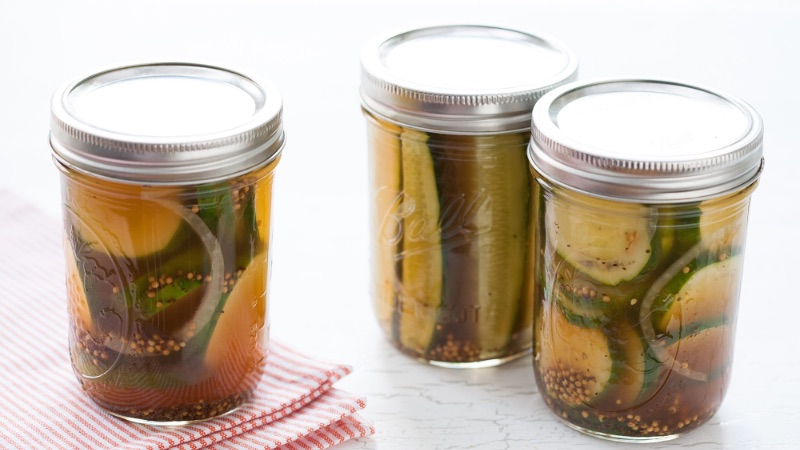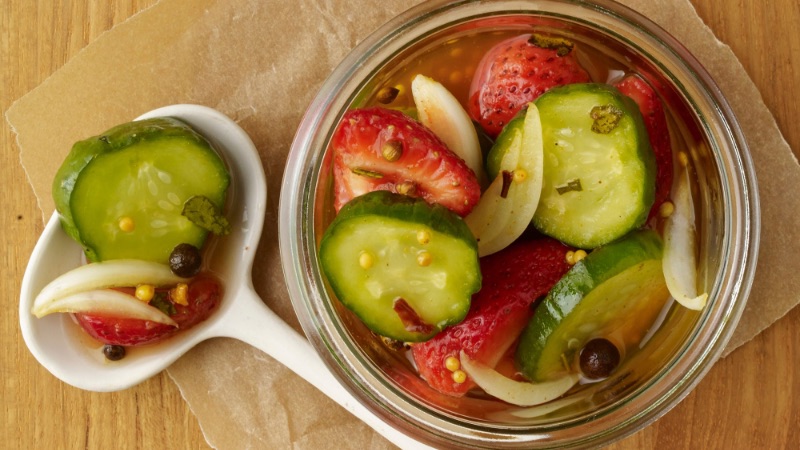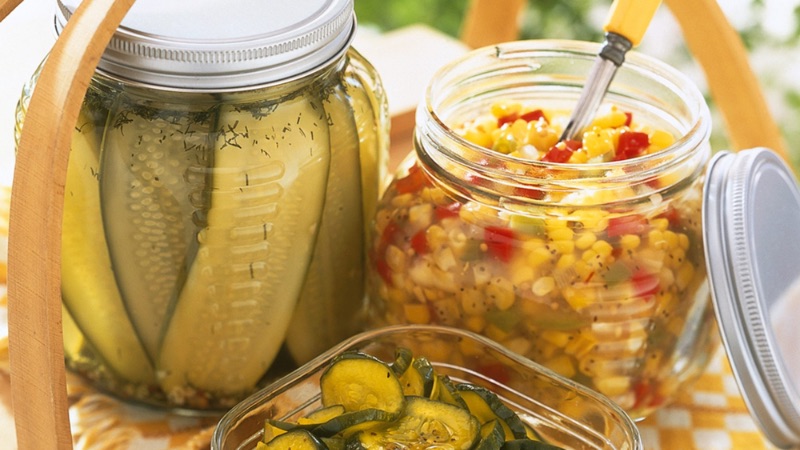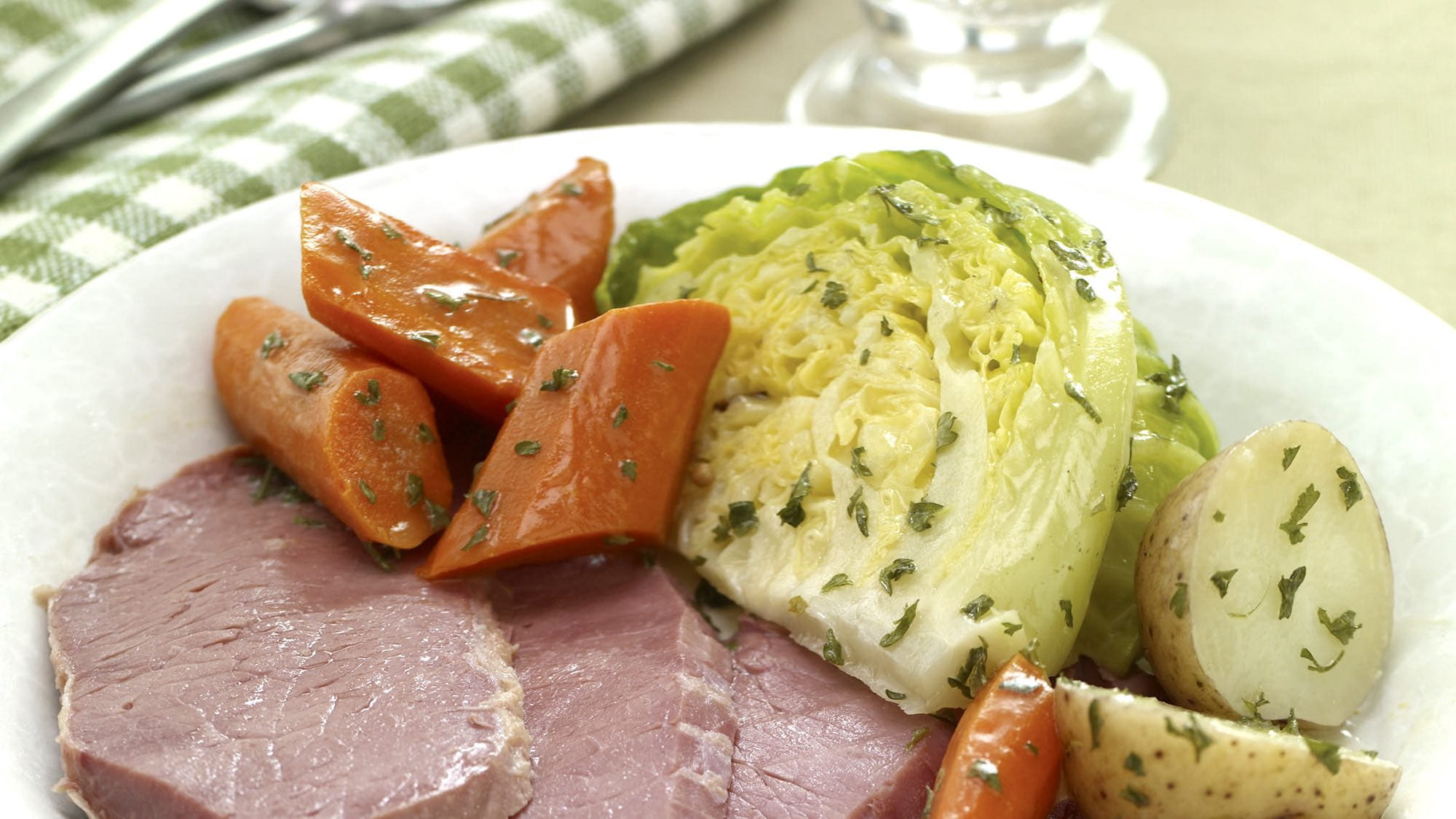The peak of summer, when gardens and farmers markets are overflowing with incredible produce, may feel like it could last forever, but fall will be here before you know it. But there's one way to make this time of year stretch on, of course—that's literally to preserve it. Yes, we're talking about pickling.
Our favorite thing to pickle—and the most iconic—are petite, crisp cucumbers. Come mid-July, these knobby little guys are sweet, juicy and packed with flavor. However, if you’ve ever ventured into pickling, you'll know that these cucumbers often turn out water-logged and soggy with no resemblance to the perfect little vegetables they once were. Do not be discouraged—with the help of a few simple tips, you too can be munching on homemade, crunchy pickled cukes all the way until Thanksgiving.
Photo: McCormick
To begin, pick the right cucumbers. Most varieties will work, but the small, firm ones are best. Kirby pickles are ideal—they have a thick skin that stands up to pickling liquid and naturally have a great crunch. Next, the fresher the cucumbers the better. If you don’t have the luxury of growing your own cukes, head to a farmer’s market to check out the selection. Grocery store cucumbers are often waxed and have been sitting on the shelf, wrapped in plastic for a long time. If you can’t make your pickles right away, chill them—these vegetables like the cold. Wrap them loosely in an unsealed plastic bag so they get a little air. If wrapped too tightly, they will get soft and slimy and there is no coming back from that.
The next step is to slice or quarter the pickles as desired—thicker slices will stay crisper than thinly sliced pickle chips. Also, be sure to trim off the blossom ends of the cucumber. The blossom is believed to have enzymes that make the vegetable soften, no matter how many steps you take to avoid it.
Photo: McCormick
Now, here’s the essential step: salt your cucumbers before pickling.
Cucumbers are packed with water. By tossing your sliced cucumbers in a few tablespoons of salt and letting them sit for two to three hours, you draw out a lot of extra moisture and firm up the vegetable. I like to do this in a colander set over my sink or a large bowl so any excess moisture can drip out. Bonus: this step will also help flavor your pickles.
Finally, give your cucumbers a quick rinse under very cold running water, then drain them and transfer to a clean kitchen towel. Pat dry and pack the cucumbers into clean jars before topping with the hot brine. Let the pickles cool before sealing and refrigerating. Non-canned pickles will last in the fridge for up to two weeks, while properly sanitized and canned pickles can be stored at room temperature for up to a year. For a beginner’s guide on how to can your own produce, check out this article on canning 101.
Photo: McCormick
And let's just say, worst-case scenario, you end up with soggy pickles? We've got a fix for that, too: Turn them into relish by transferring the pickles and a little bit of their brine to a food processor and pulsing until finely chopped. Store your relish in a jar to pile on hot dogs or sandwiches layered with sliced Italian meats and cheeses. Either way, it will taste like endless summer.
This article was written by Julia Heffelfinger from Food & Wine and was legally licensed through the NewsCred publisher network. Please direct all licensing questions to legal@newscred.com.











